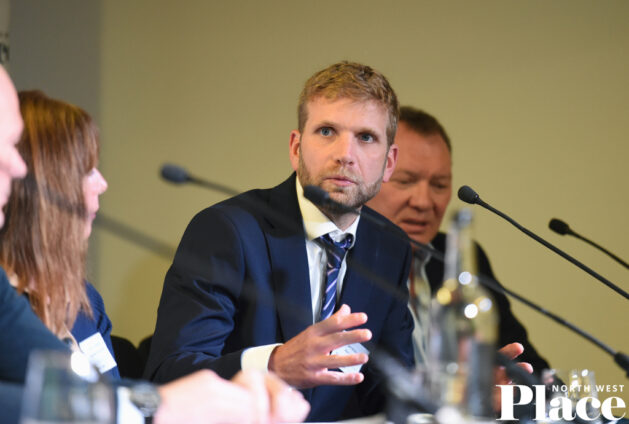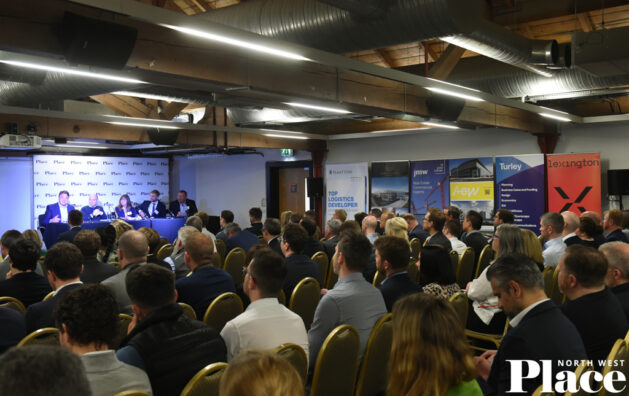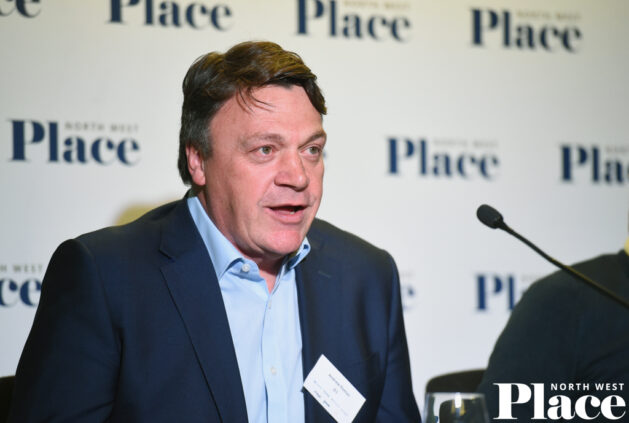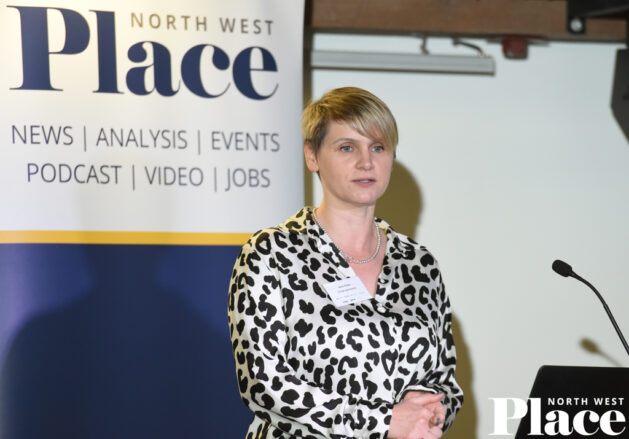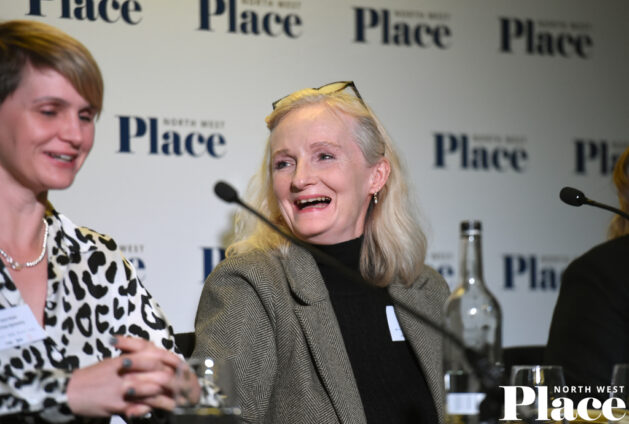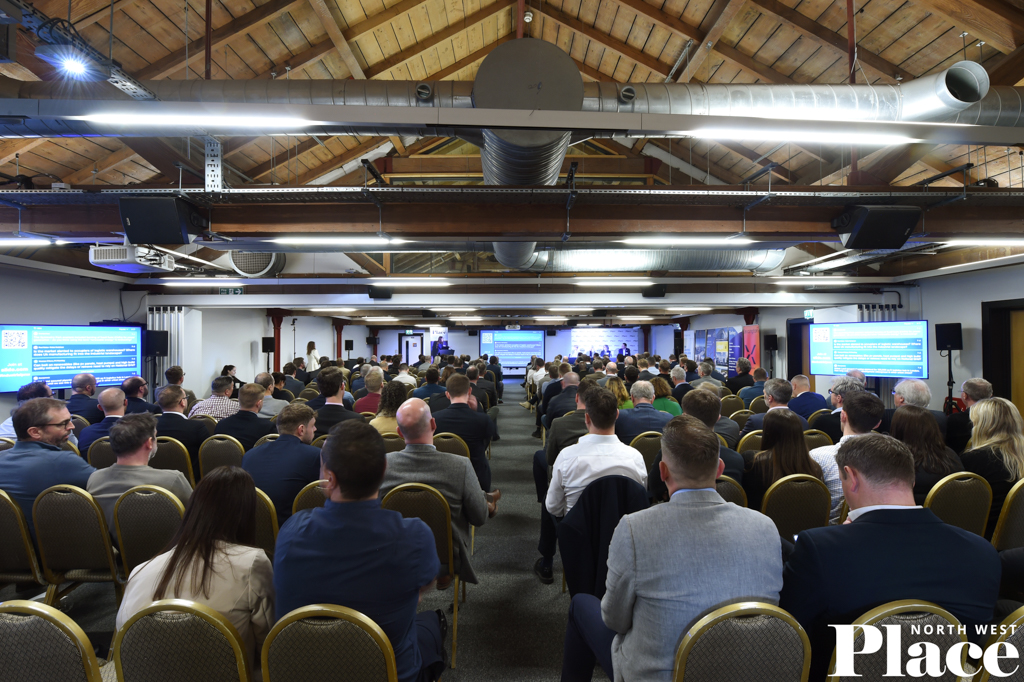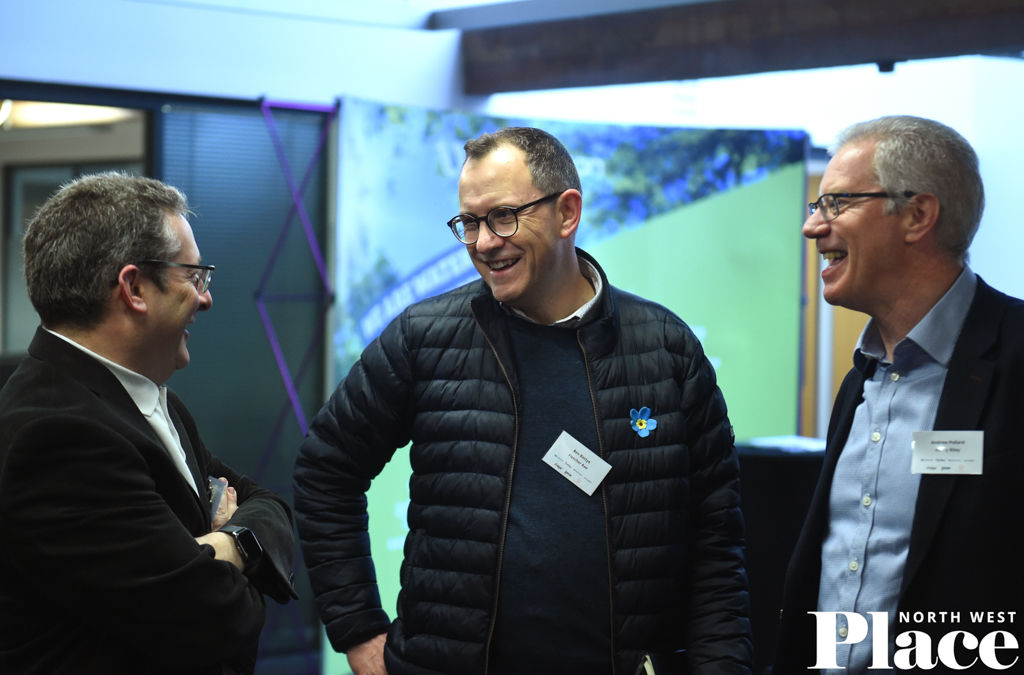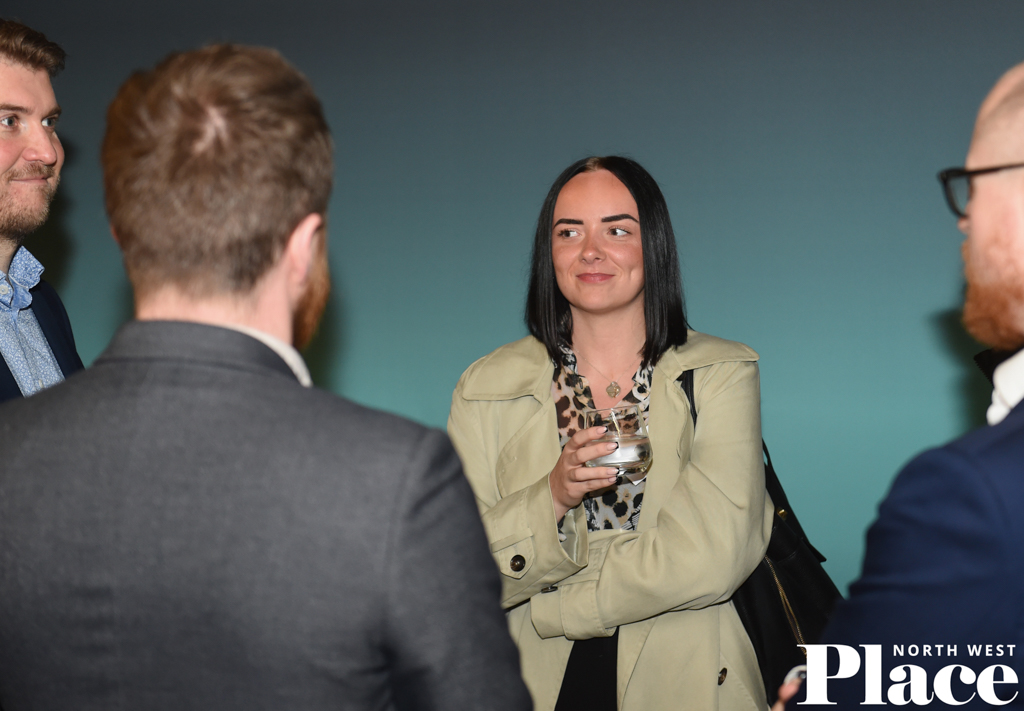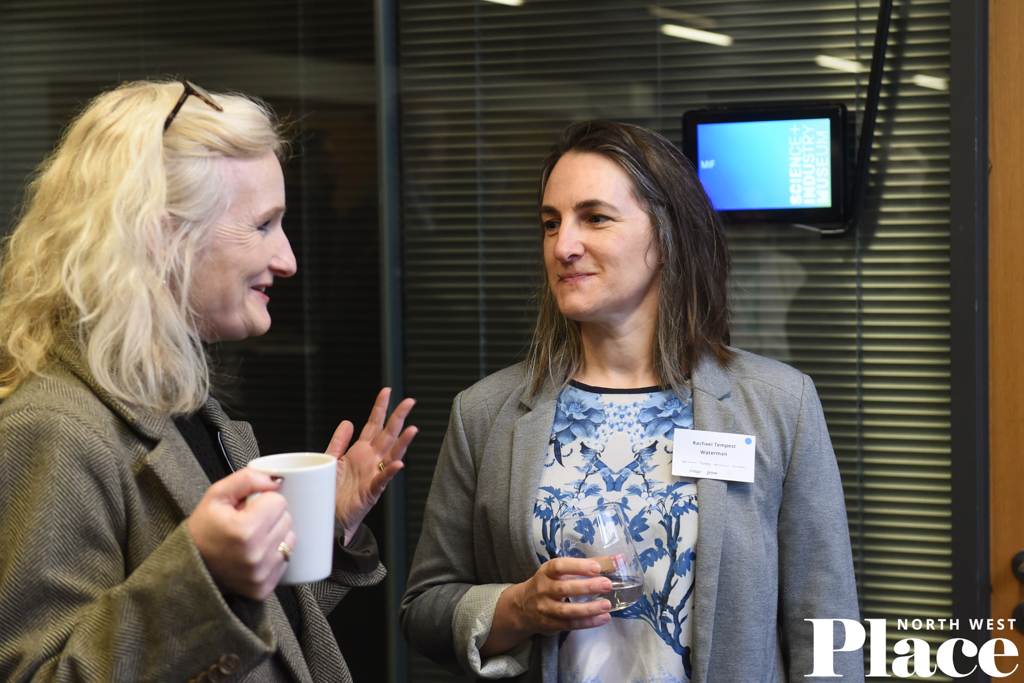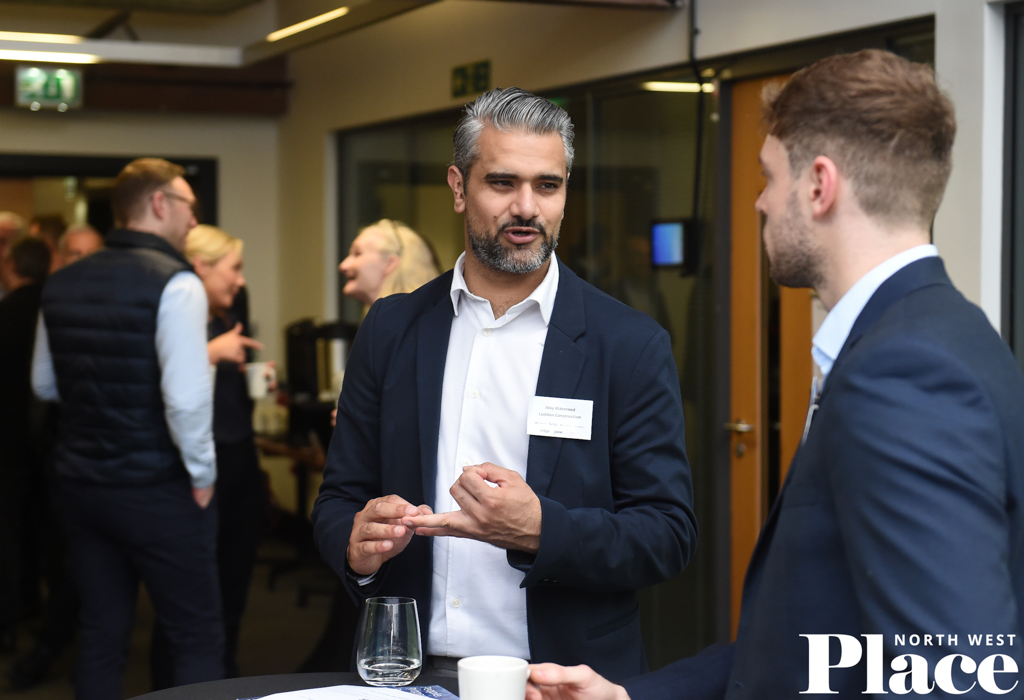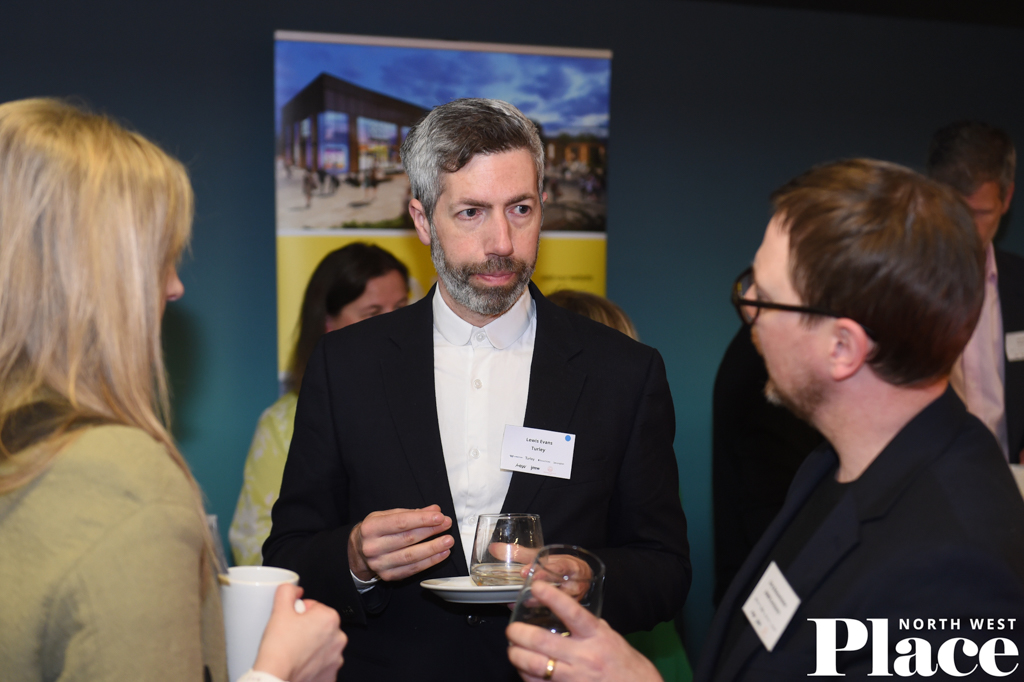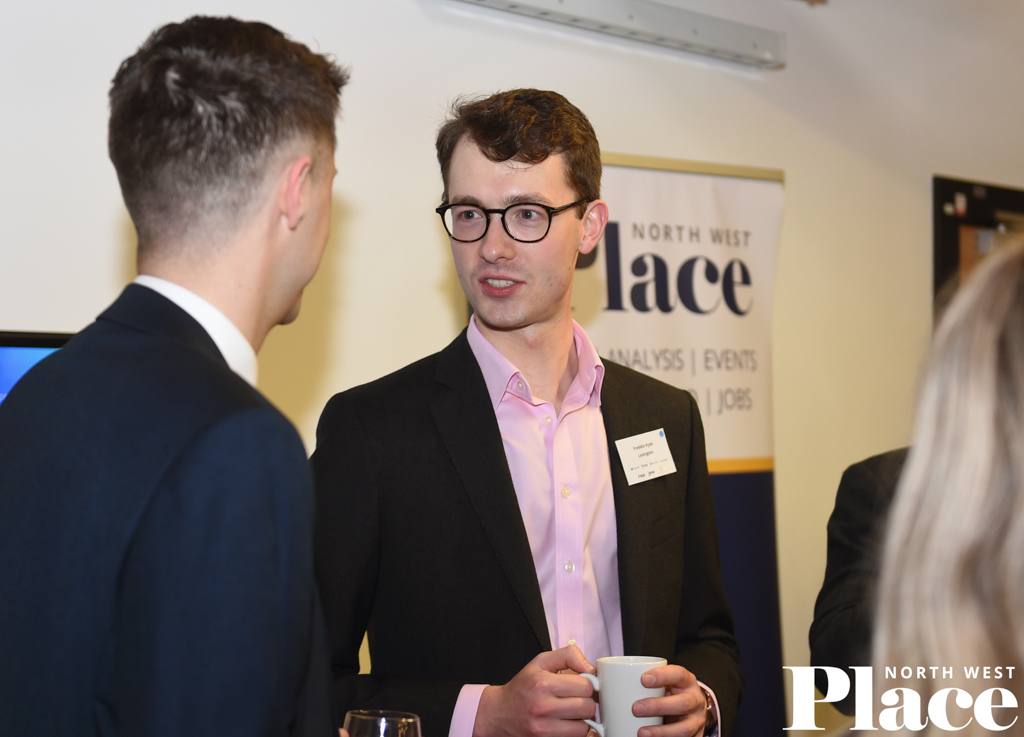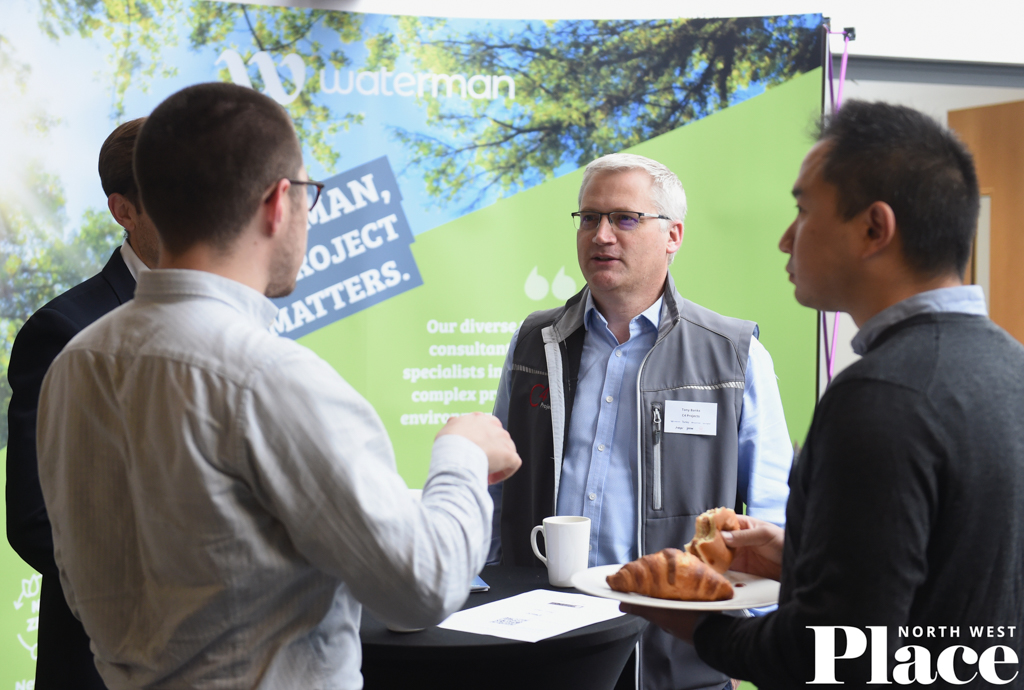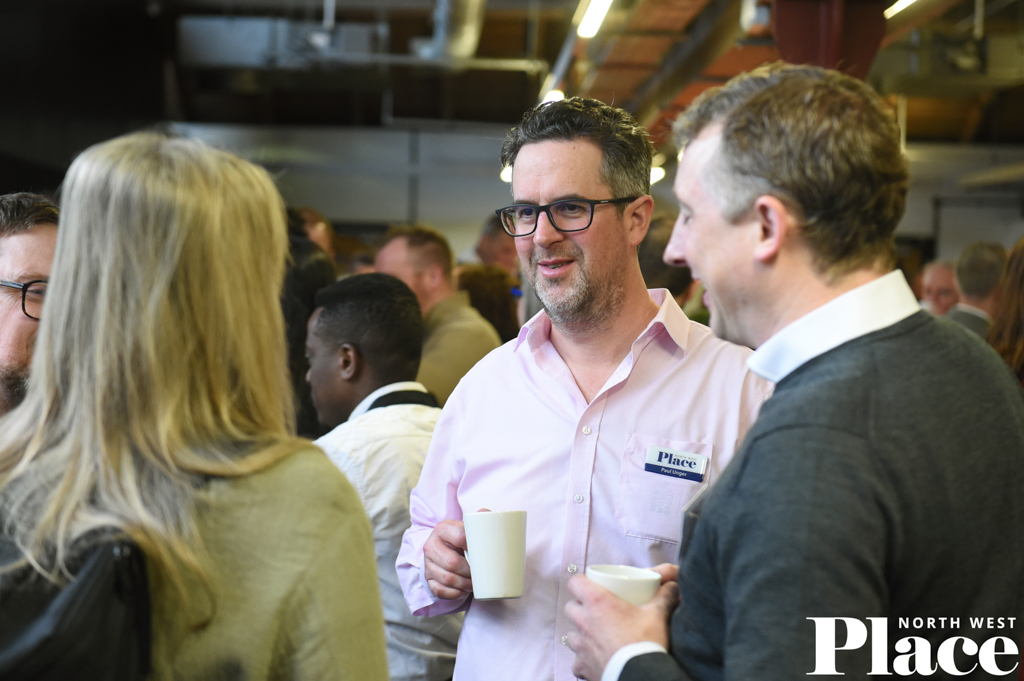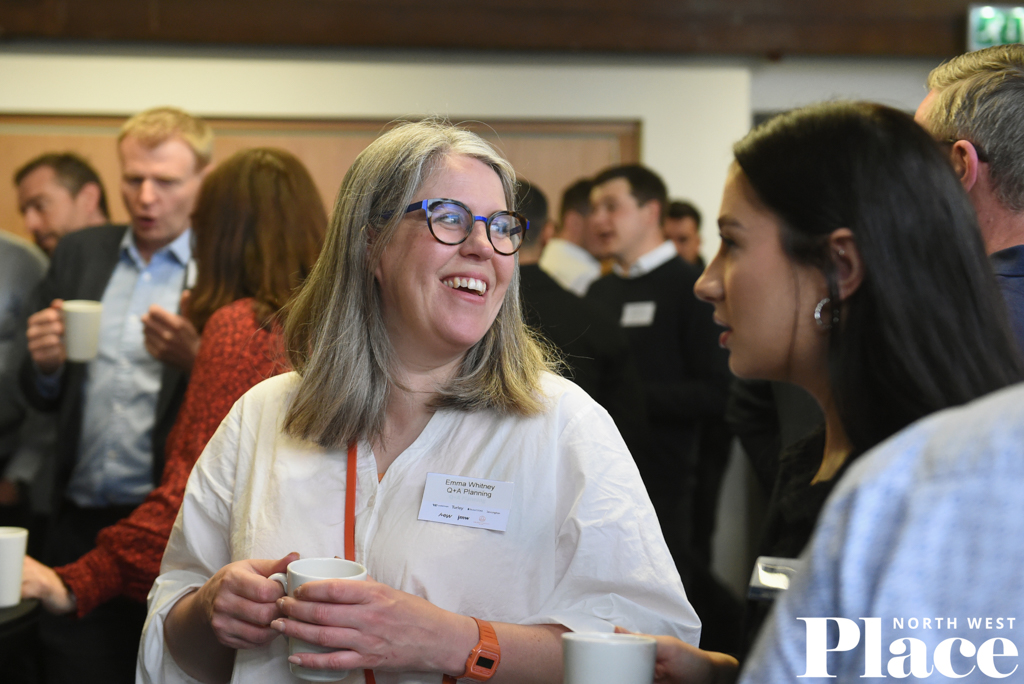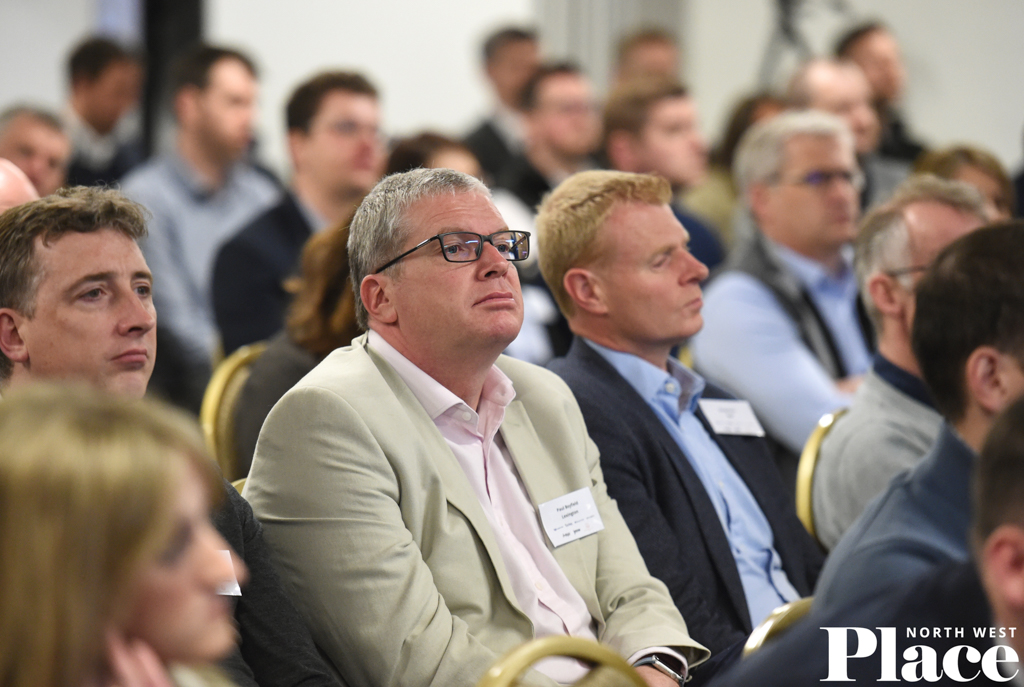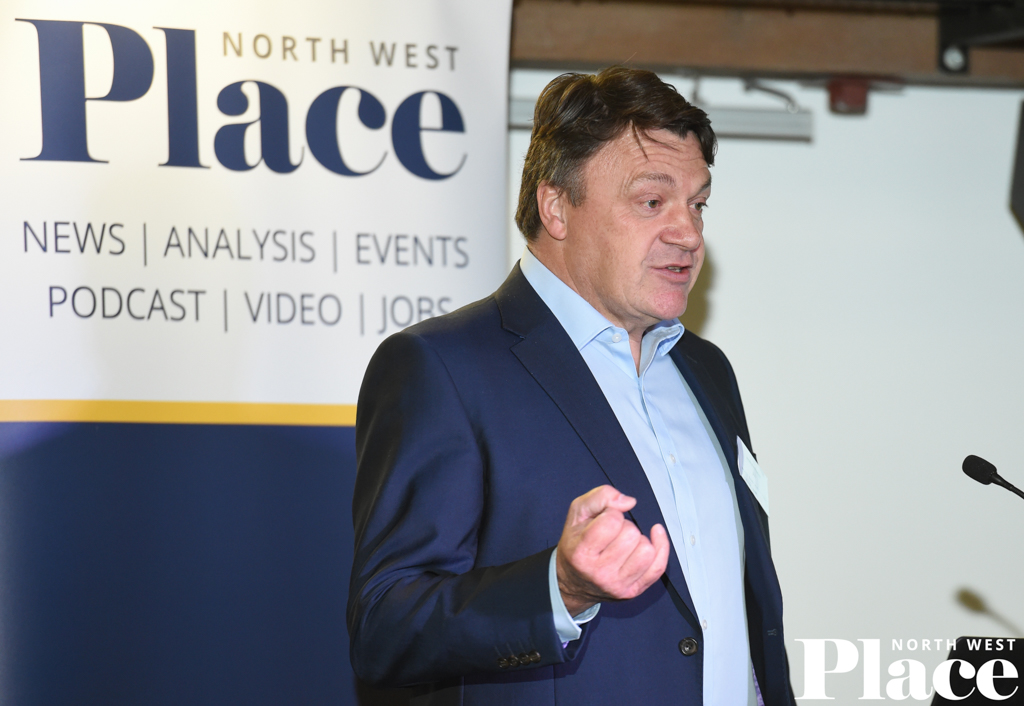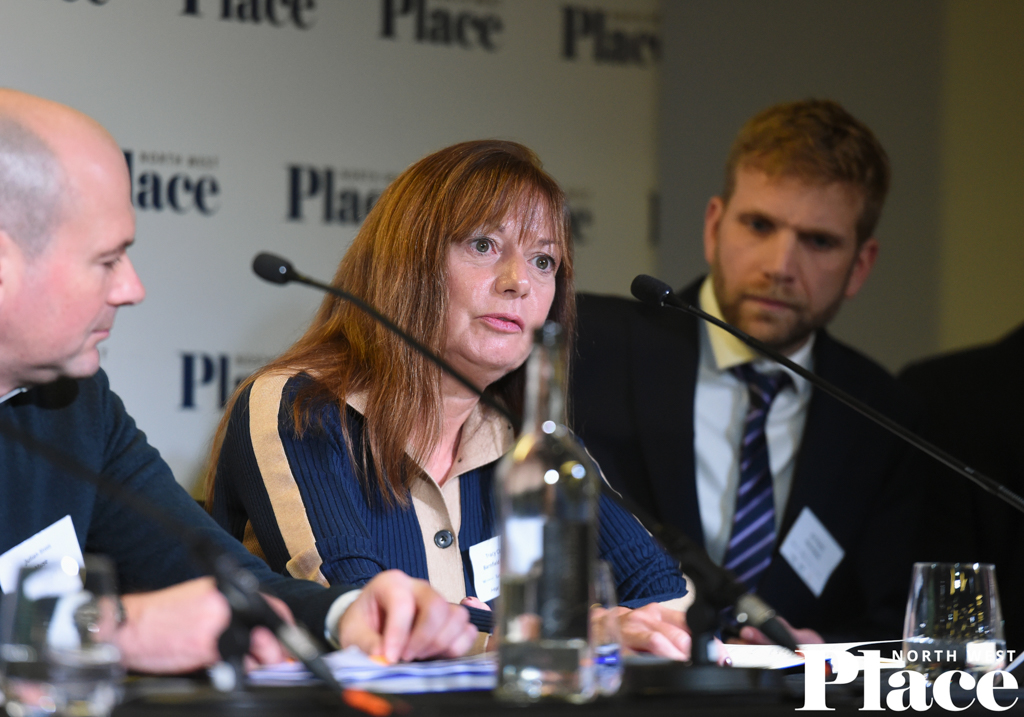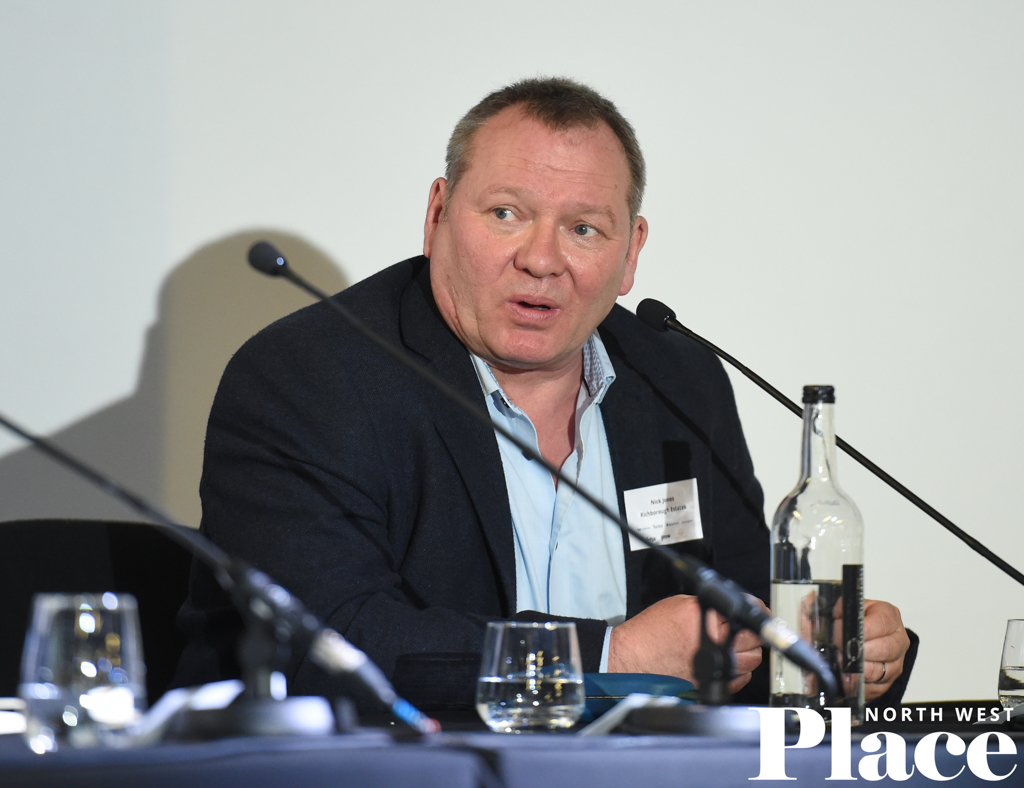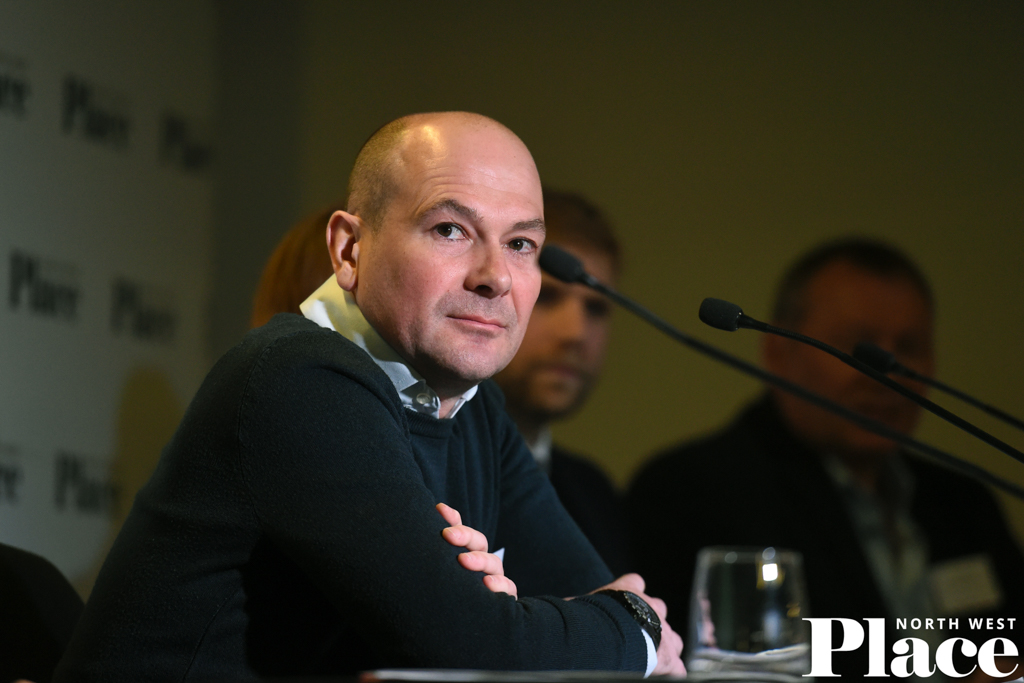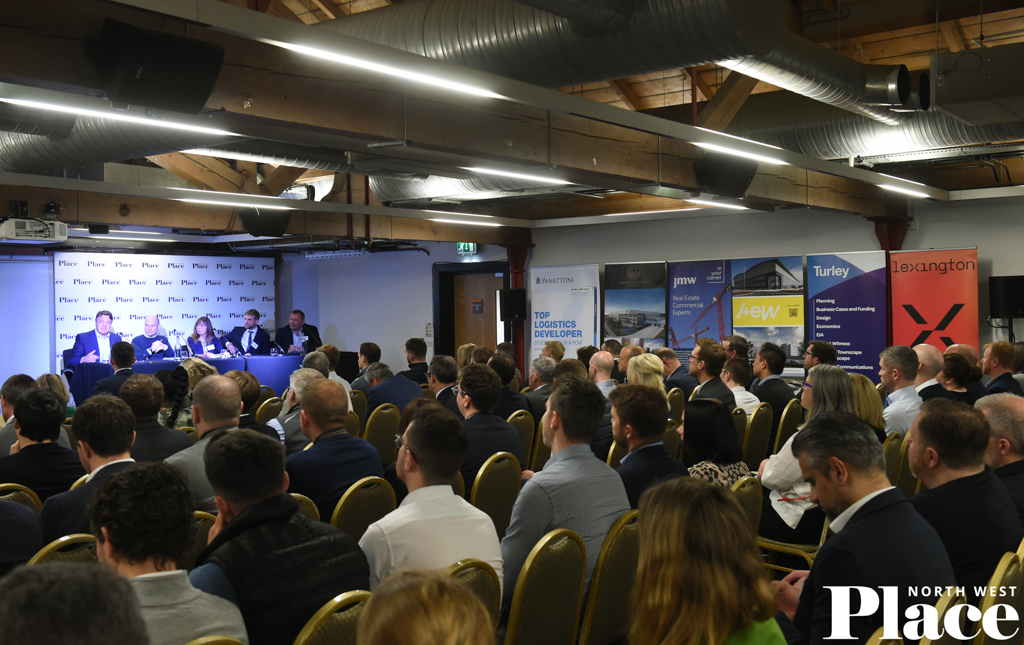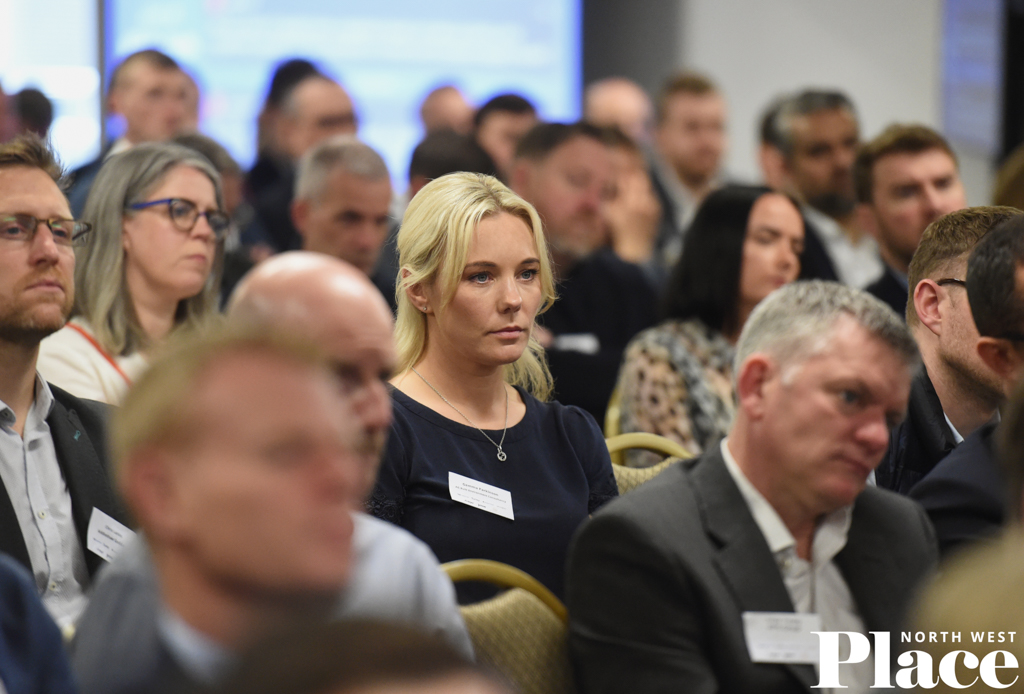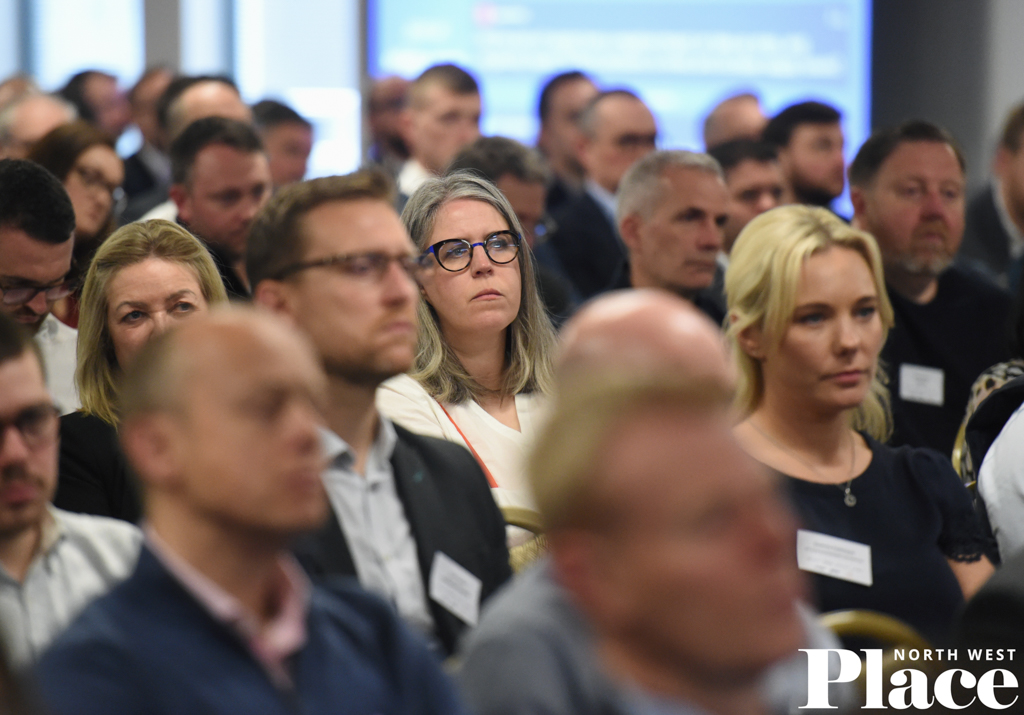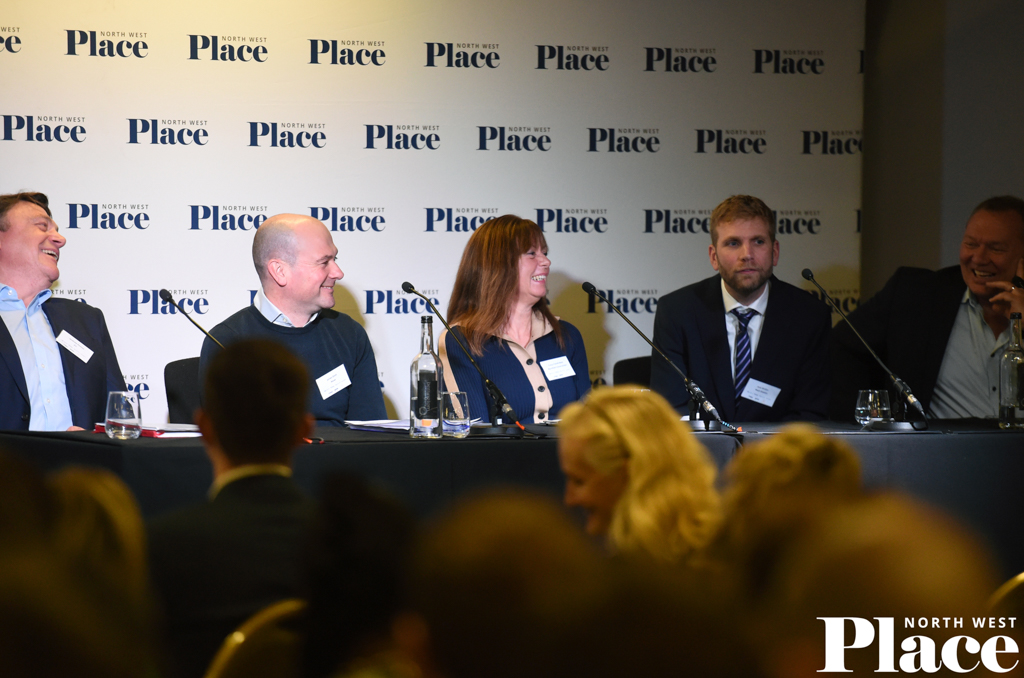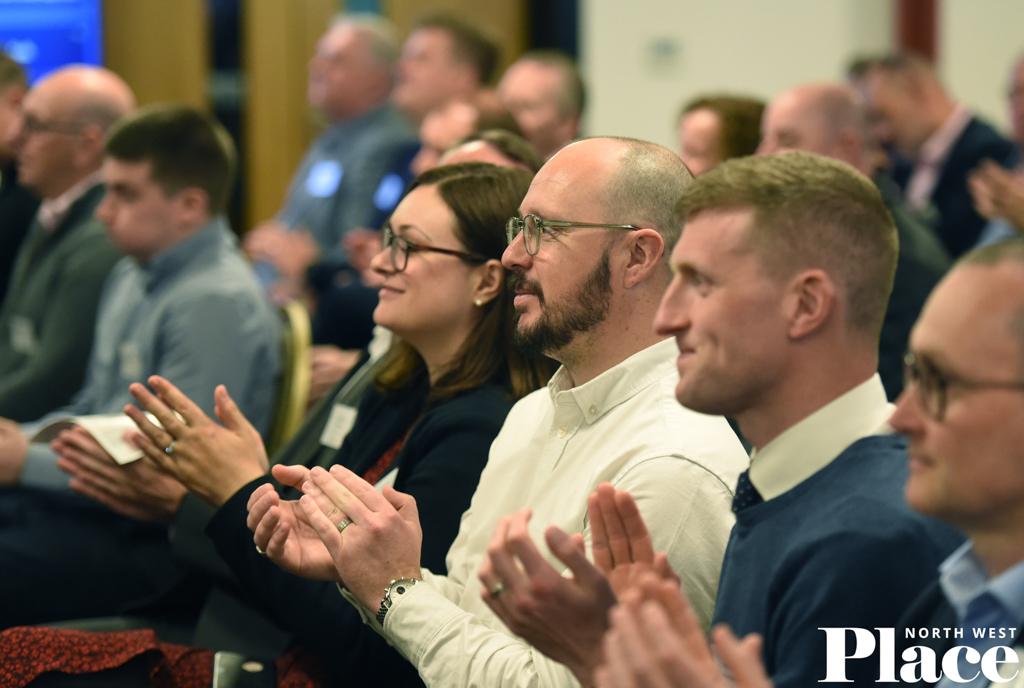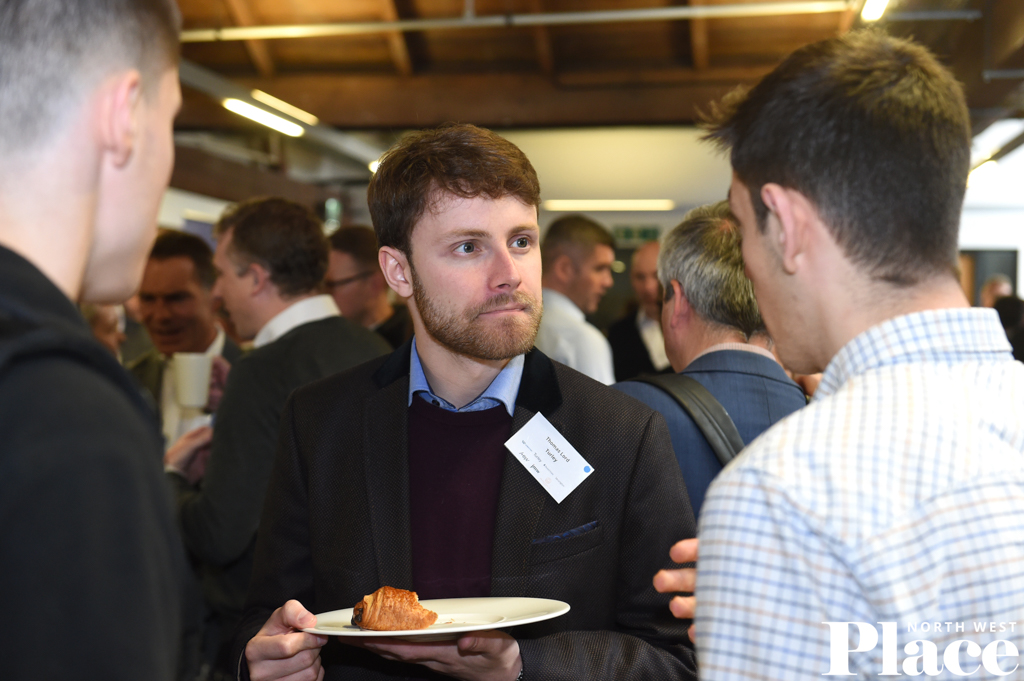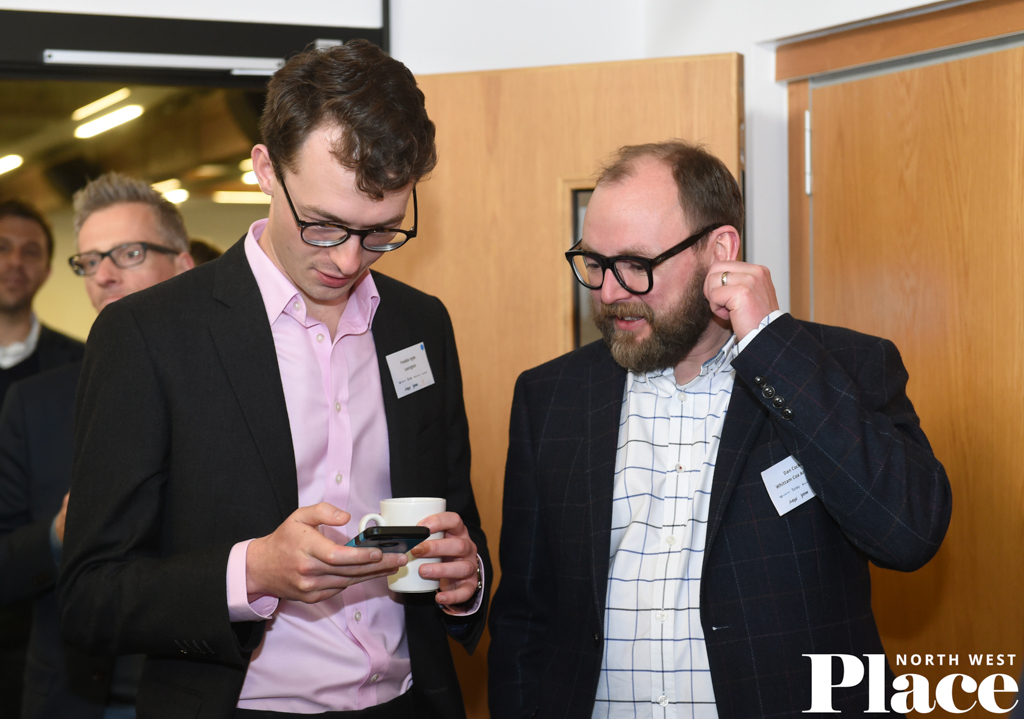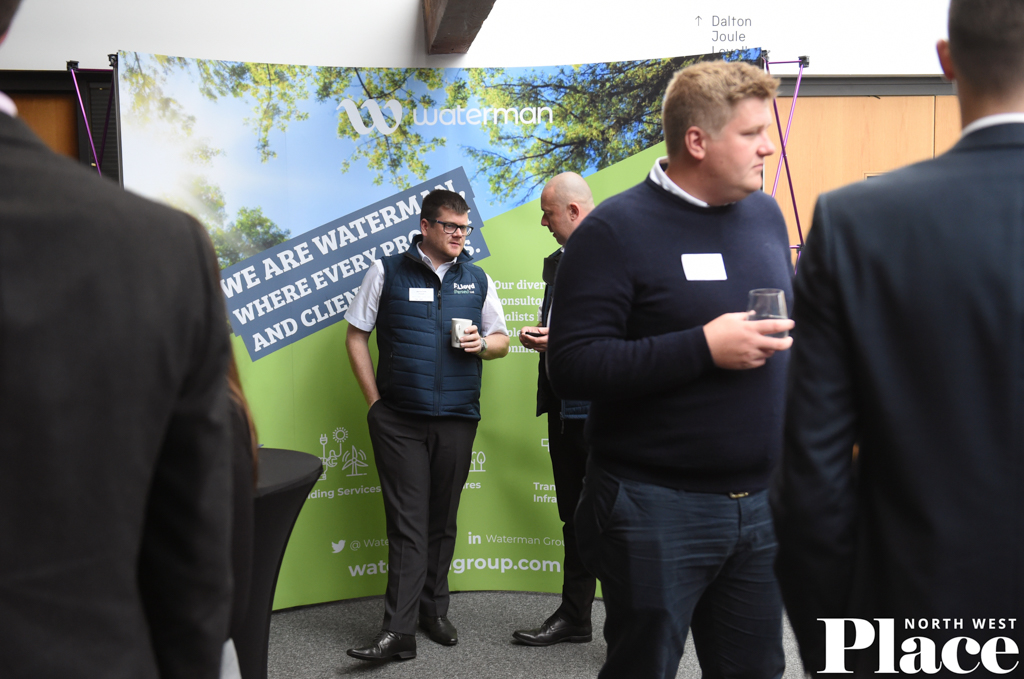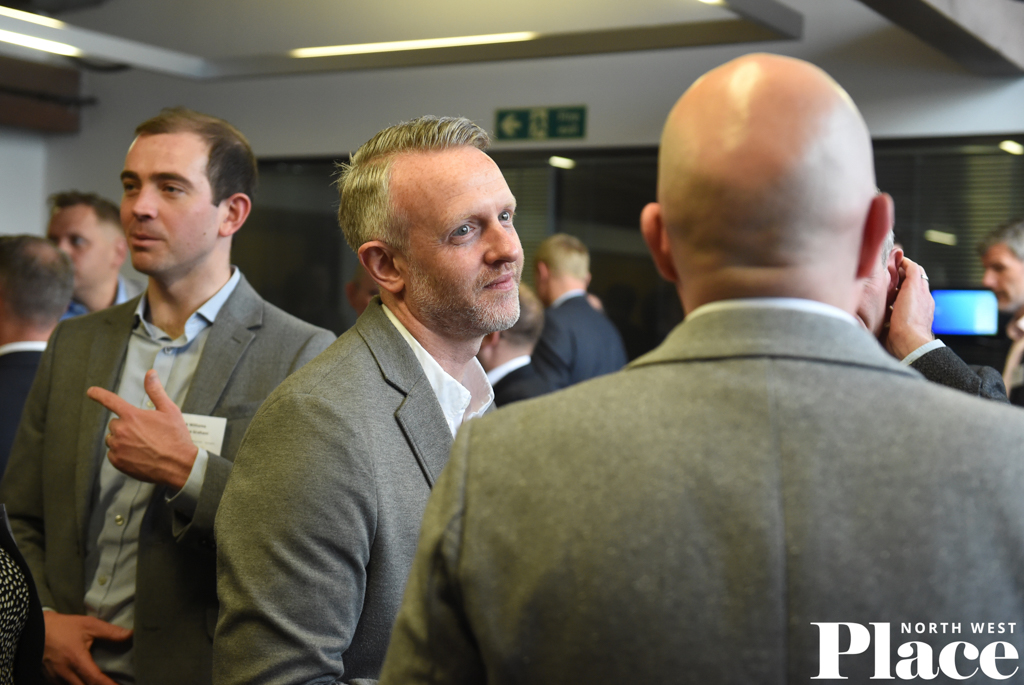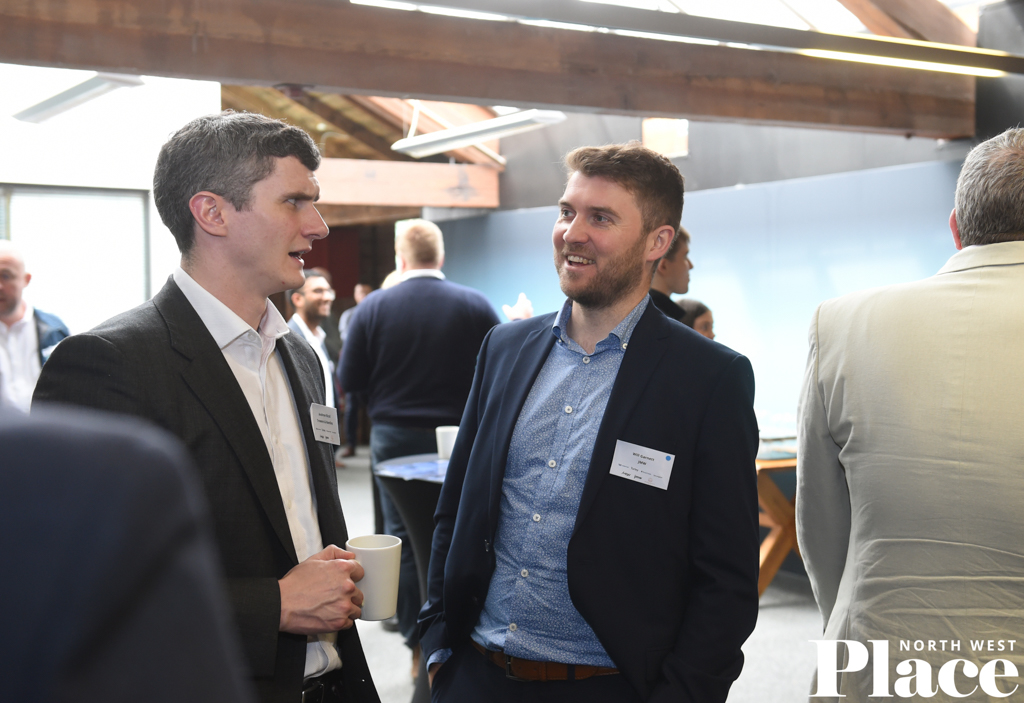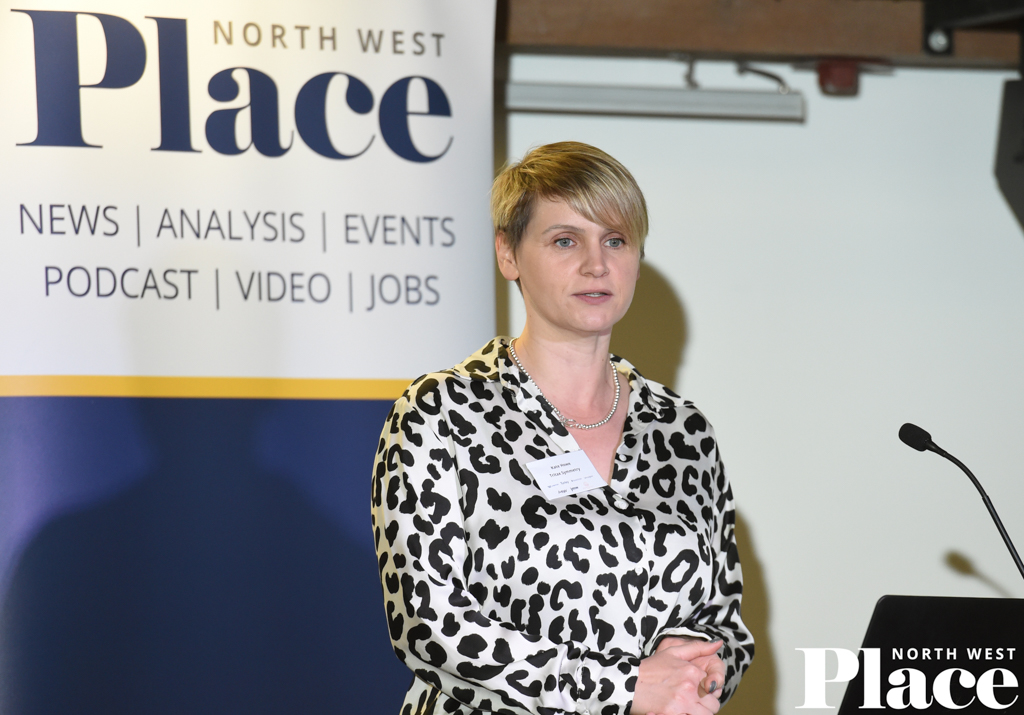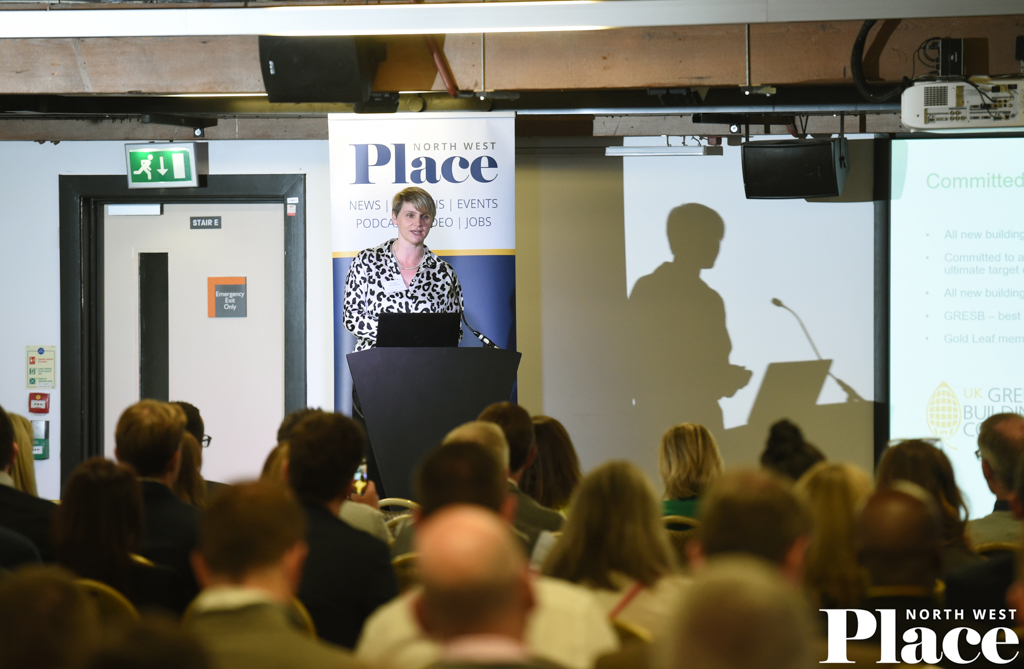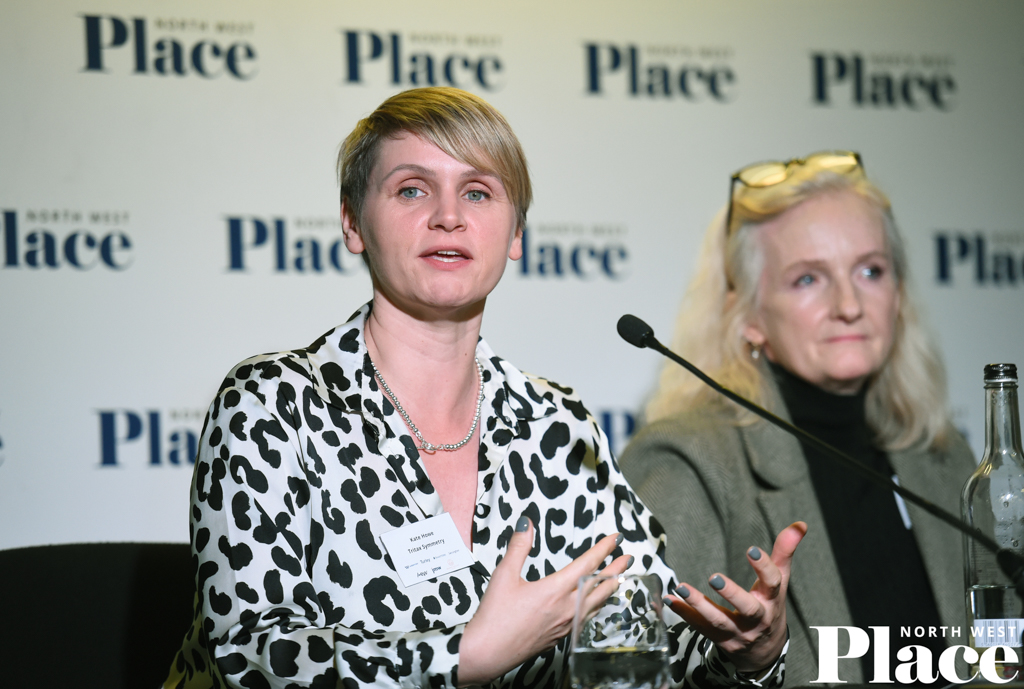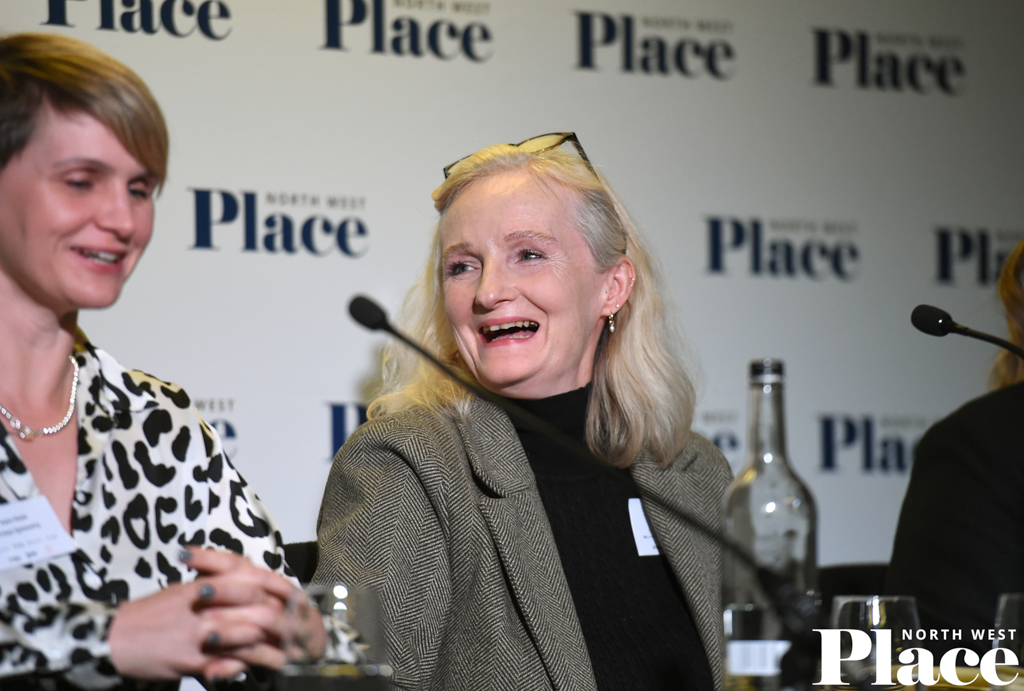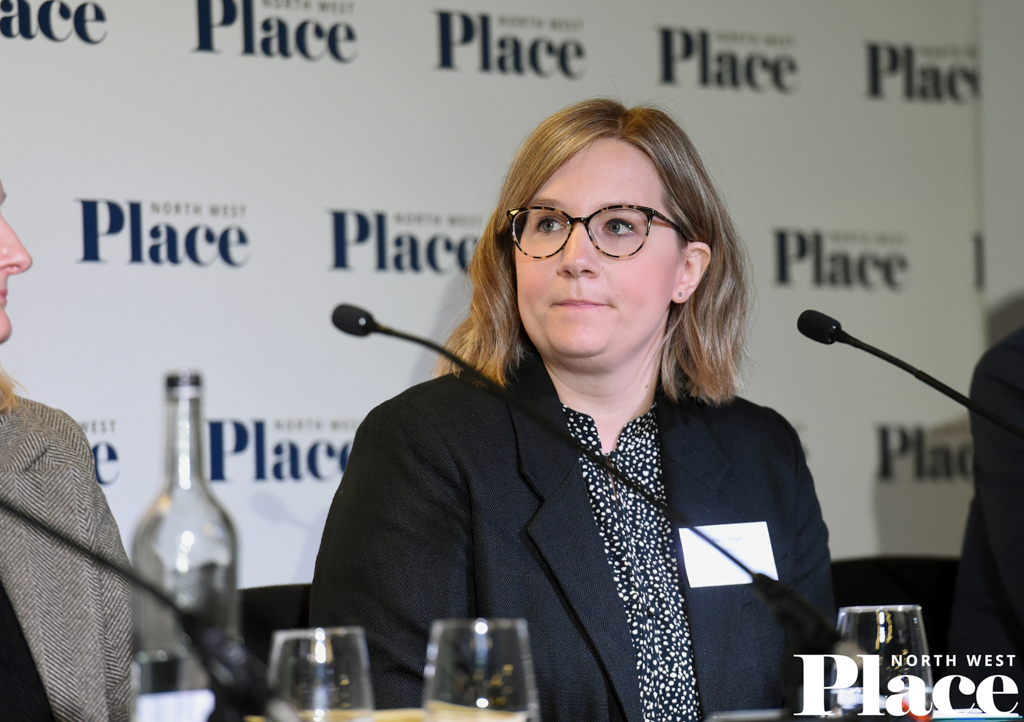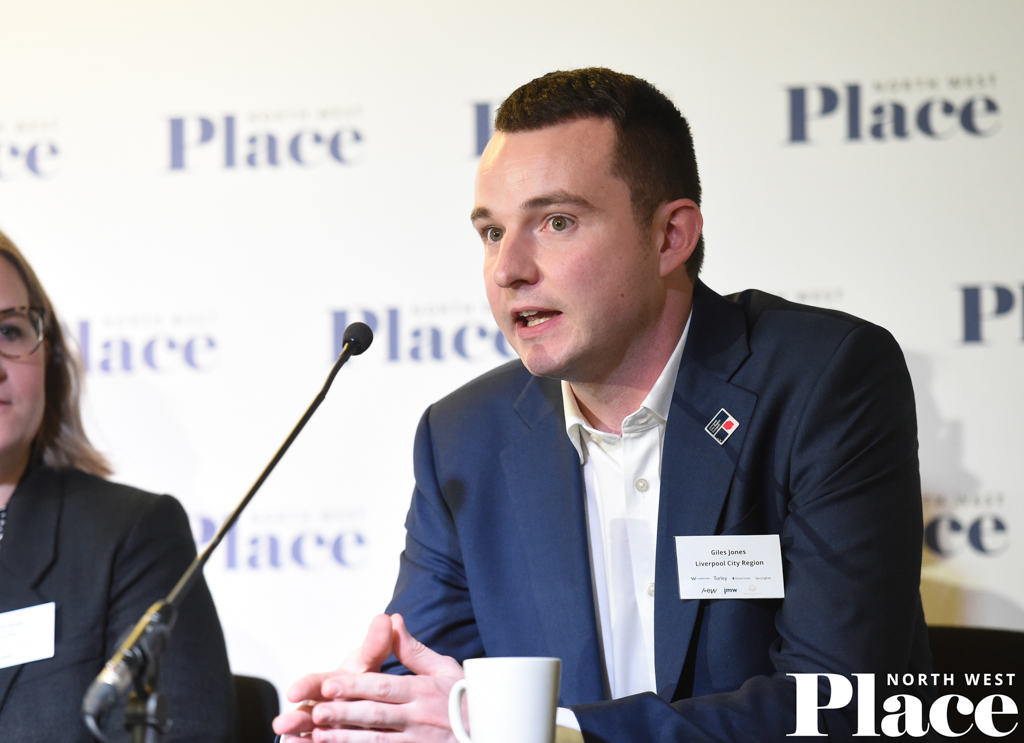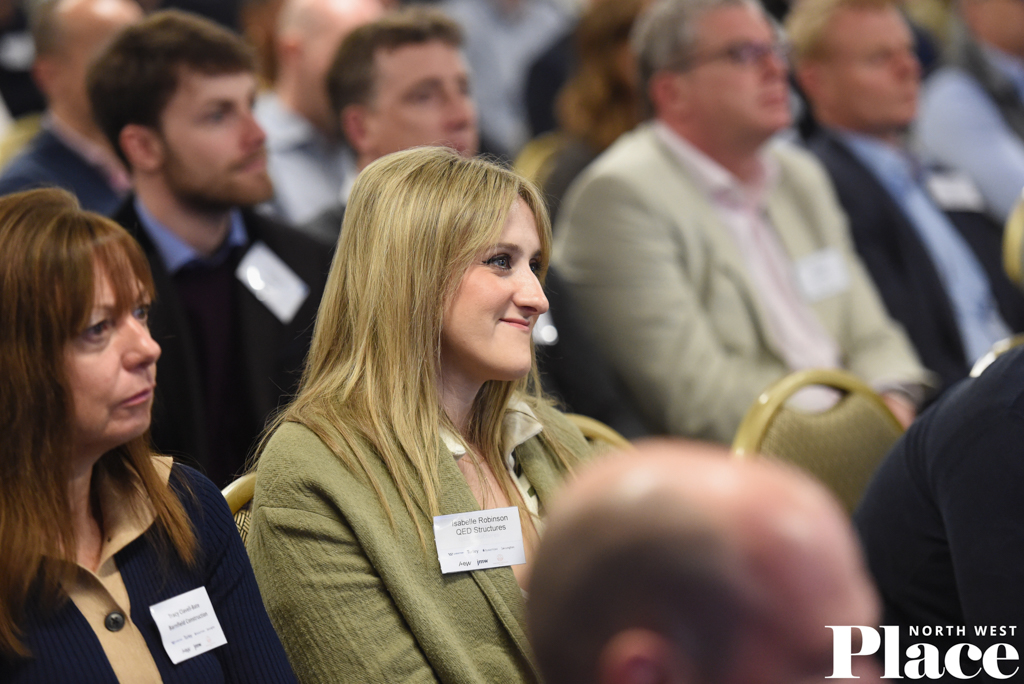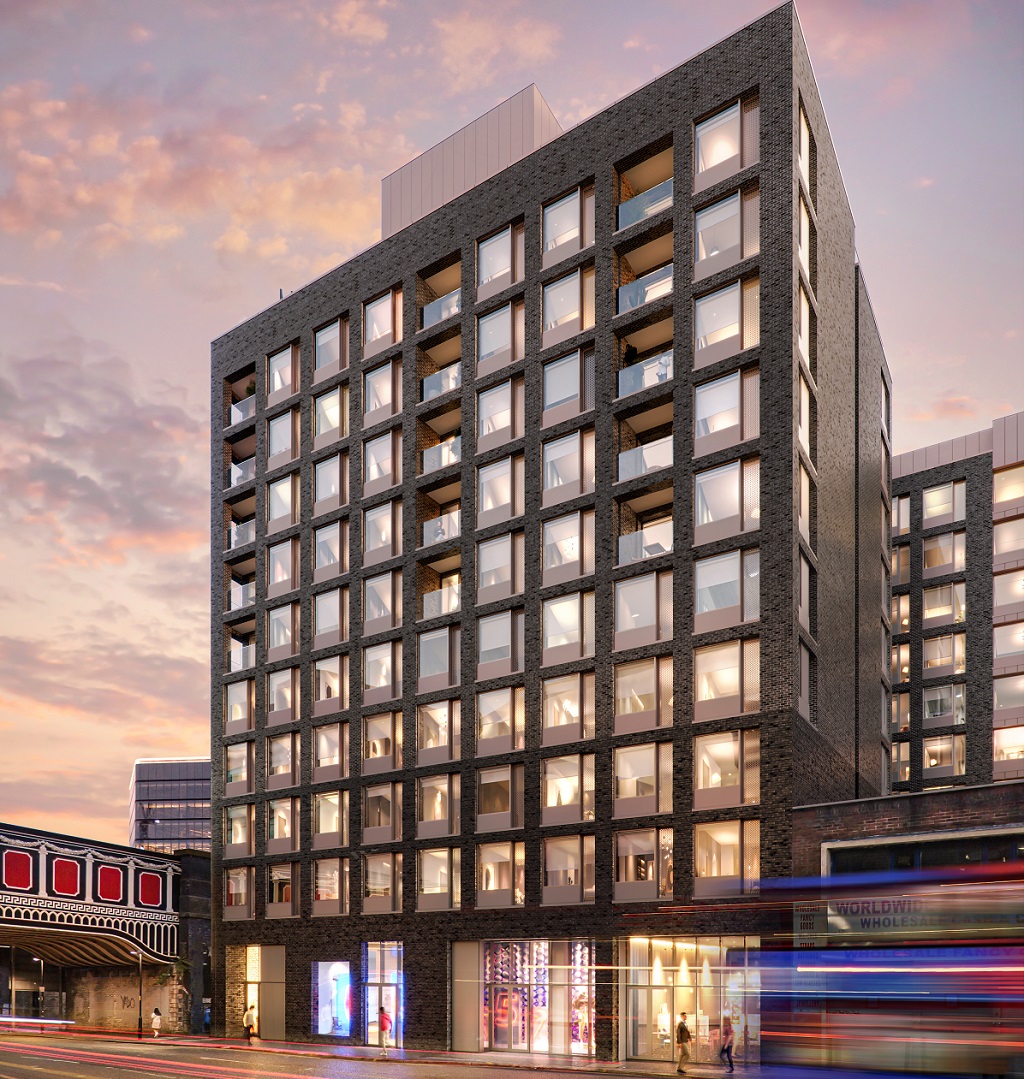Event Summary
Industrial + Logistics | Summary and photos
Around 250 people gathered to take the pulse of the industrial market as it recovers from the economic dip at the end of 2022.
Place North West’s Industrial + Logistics conference was sponsored by Aew Architects, Lexington, JMW, Panattoni, Waterman, Turley, and Cole Waterhouse
Health check
Andrew Pexton, senior director of JLL, said high inflation and interest rates have impacted everyone. The supply chain is starting to move again though, with operators now realising that the ‘just-in-time’ supply chain doesn’t work when supply chains come under pressure.
“Everything went in a poor way in late 2022. But this has started to bounce back.
“While there’s a clear imbalance between supply and demand, and only a 12-month supply at the moment, speculative development will return,” he added.
Despite some discouraging statistics, he went on, such as issues in the size of units available and limited stock on the M6 corridor, there are signs that reflect the strength of the economy.
See gallery below
“Companies that have a need to move have seen past this, which is a positive takeaway for today,” he said.
Another positive takeaway is the resilience of the mid-box and multi-let sector.
“Specifications of buildings are more expensive, planning is probably slightly more difficult – but the market is really strong and it’s a major part of the sector across the region.”
State of the market
The first panel discussion began with the participants’ thoughts on the importance of sites’ accessibility.
There’s a lack of supply along the M6 corridor, said Julian Stott, development director of Muse, and accessibility is key for attracting and retaining staff in a competitive market.
Jack Brister, managing director of development of Wain Estates, agreed, and called for investment in infrastructure to allow well-located sites to come forward.
Current challenges
Over the next 12 months, the challenge will be getting the market moving again, said JLL’s Andrew Pexton.
There was consensus on the planning process being an issue for the infrastructure industry.
“Viability is a big issue for industry and logistics,” Brister said. “But it’s taking longer to make planning decisions, which isn’t helping supply and demand.”
Meeting power requirements is another huge challenge at the moment for developers, said Stott.
“Trying to quantify the power requirements for a site means taking into consideration the tenant mix and how the buildings might be used – whether occupiers will be looking at potentially electrifying a vehicle fleet.
“You want to overestimate so you have enough power to service the site, but when you make the application to the local provider, it’s eminently clear there’s not enough power in the National Grid,” he said.
“This means developers are trying to reserve power to safeguard a site – residential as well, where you’ve got the need to have electric charging points at nearly every home. We need to think carefully about power allocation, the age of our infrastructure and how to safeguard future power for sustainable development, which is all about electrification,” he said.
Regulations around the Green Belt are another challenge at the moment, because they’re outdated, and are stymying development, said Nick Jones, director, Richborough Estates.
“The idea [of the Green Belt] was to prevent urban sprawl…some of the larger capable logistic sites we’re looking at weren’t around at that time, in the 1930s, ‘40s or ‘50s. Green Belt status has no relevance here.”
As a result, he said, “Applications are built on the premise we might be going to appeal because of ill-educated planning committees.”
Stott agreed. “You know you’re in for the long-haul at the outset.”
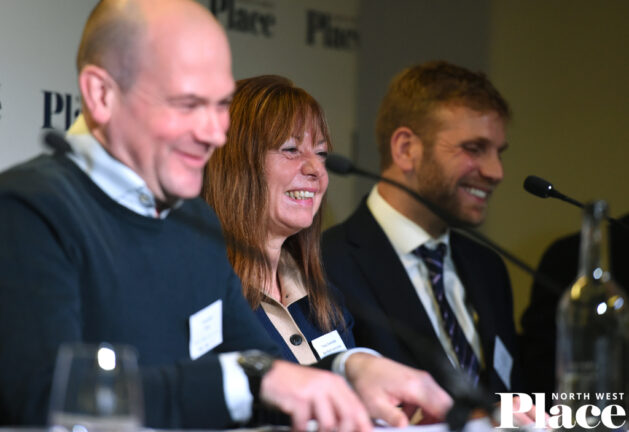
From left: Julian Stott, Muse; Tracy Clavell-Bate, Barnfield Construction; Jack Brister, Wain Estates. Credit: PNW
Occupier demand
The panel agreed that occupiers are increasingly concerned about how a site will enhance the wellbeing of its workforce.
“The expectation is a good quality environment where staff have amenities around them,” Stott said. “It’s about attracting staff, but also retaining them in a competitive environment.”
Brister said this was also the case for the communities living local to new developments.
“Developers now need to look at local communities and make sure they add value to that. We want to positively impact in the areas we develop,” he said.
“As a sector, we’ve been good at driving sustainability. The next focus is the social impact – making sure, as developers, we create spaces so they can create workspaces where health and wellbeing, and local communities, are a priority.”
International image
The country needs to work on its brand, the panel agreed, to make it more attractive to investors.
“The government needs to show commitment to the economy and invest in infrastructure and power and show confidence in Britain, which will start to attract investment,” Brister said.
But if we’re sending out a positive message, we need to be able to walk the walk, Pexton warned.
“We’ve got to be able to back it up with sites we can get occupiers to come to. We’ve got to be able to have these sites – if not fully available – at least where companies can come to and locate there and know what the parameters for them to build are.”
But the UK is already at an advantage in some ways, he added.
“A lot of the UK market already factors in the interest rate rise. What happened pre-Christmas was a major repricing model that the rest of Europe is catching up on, so I think we’ve gone through the pain.”
We must remain positive, Tracy Clavell-Bate, head of development & acquisition, Barnfield Construction, urged. “This is a period of revaluation, and things will recover.”
Industrial futures
Kate Howe, development director of Tritax Symmetry, delved into some of the findings from research carried out by the developer into the occupier market. While confidence was low at the end of 2022, this year 91% of occupiers said they were are looking to maintain or increase warehouse space in next two years.
“The long term view of the industrial and warehouse sector is going to be continued demand for space in the UK,” she said.
“Unprecedented rental increase is telling us that there is stability in the market, which is really important. Our perspective is that yields will stabilise.”
Occupiers are taking ESG credentials more seriously than ever before, Howe said.
“We need to meet future needs of occupiers, how we safeguard the future of a building. Two highest elements on occupiers’ lists are green energy and onsite renewable energy generation and storage.”
In response, the explained that Tritax Symmetry has just built its first on-site energy centre at Symmetry Park Biggleswade in Bedfordshire.
“It lets occupiers know we’re doing everything to meet their needs,” she said.
Tritax’s ambition, she added, is to build energy centres on each of its sites.
Innovation
The panel opened with a discussion about the biggest changes coming to the industrial market over next 15 years.
“The sector has issues with transport infrastructure, energy security, a skills shortage across every sector and land shortage,” Diane Corfe, director and national ecology service lead of Waterman, summarised.
“Growth is imperative, but we have the finite resource of biodiversity, and we all know we’ve not met any of our global biodiversity commitments,” she said.
This includes looking at last-mile delivery solutions, said Anna Relph, director of Turley, because this part of the supply chain contributes the most of carbon emissions.
“A lot of developers and operators are starting to think about this,” she said.
Some companies are using electric vehicle fleets or drones, which leads to different types of site requirements, Relph added, while others may look for urban sites close to where goods are being delivered to.
For freeports, one of the key focuses of innovation is decarbonisation of freight movements, said Giles Jones, project manager of Liverpool City Region Freeport.
“We feel, as a freeport, if we’re facilitating trade, we’ve got a responsibility to do that in as sustainable a way as possible. We’re starting to see investment that supports this among fleets, so it feels like there’s momentum in this area.”
There are also many ways to make older buildings more biodiverse, said Tritax Symmetry’s Kate Howe. Developers can think about adding electric charging points for electrical cars, and thinking about waste disposal, for example.
“Bigger elements, such as retrofitting green roofs, might be trickier depending on the structure, but there’s no reason why that can’t be implemented,” she said. “It may be seen as more difficult to get through planning but biodiversity, if thought about from the outset for repair and refurb opportunities, is absolutely doable.”
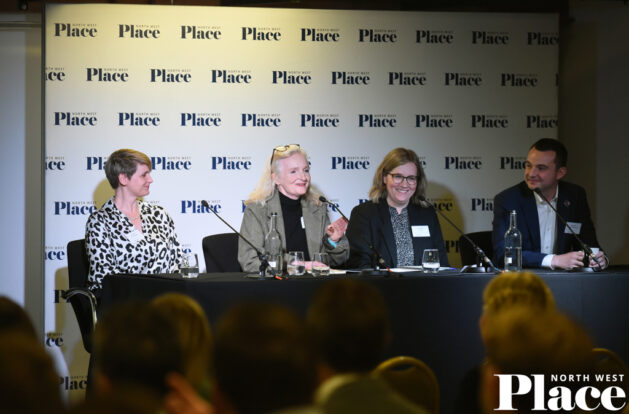
From left: Kate Howe, Tritax Symmetry; Diane Corfe, Waterman; Anna Relph, Turley; Giles Jones, Liverpool City Region Freeport. Credit: PNW
Out with relics
The panel had a lot to speculate on when asked what will seem outdated 50 years from now.
Waterman’s Diane Corfe, this includes how the industry currently sources materials for construction, and how it designs buildings.
“We haven’t got an infinite amount of land, so we have to be careful where construction is placed. But in future generations, we’ll say ‘It’s not that hard, we know what we have to do, we have the skills, technology and AI. It’s whether we’re willing to use it’”.
For Turley’s Anna Relph, the biggest bygone will be planning logistic spaces around roads.
“This attitude will shift. Who knows how we’ll be transporting goods in 2073? In the shorter term, we’re seeing a shift with transporting goods in more environmentally friendly ways.”
She added: “In future, I’d like to think we’re making developments self-sufficient and sustainable in their own right.”
The panel ended on what they’d like to see in the future for the industrial sector. In order for it to survive, Howe said, it needs a strong workforce.
“We need a good quality, available workforce at reasonable prices to make the UK competitive for manufacturing.”
And in the future, she’d like to see that sites are generating their own energy. She’d also like to see sites being “pleasant for people to be in”.
Slides
What’s next?
Wednesday 24 May | Liverpool | Artificial Intelligence in the Built Environment: Friend or Foe? | The use of AI in the construction industry is rapidly increasing, and it has the potential to transform the way we design, build, and operate buildings. However, as with any disruptive technology, there are also concerns about its impact.
Click image to launch gallery




